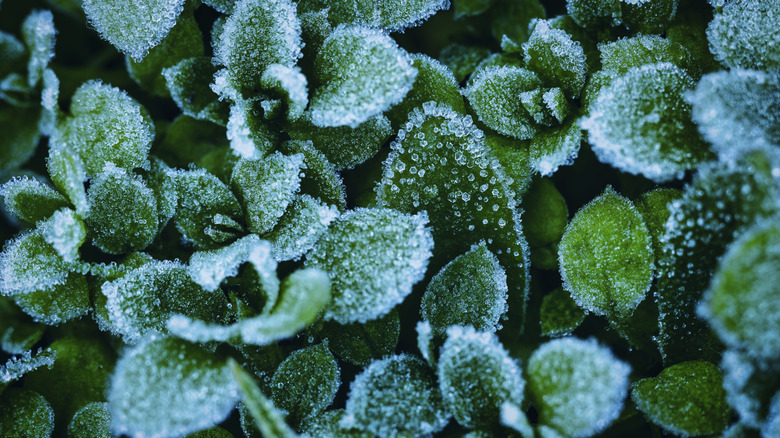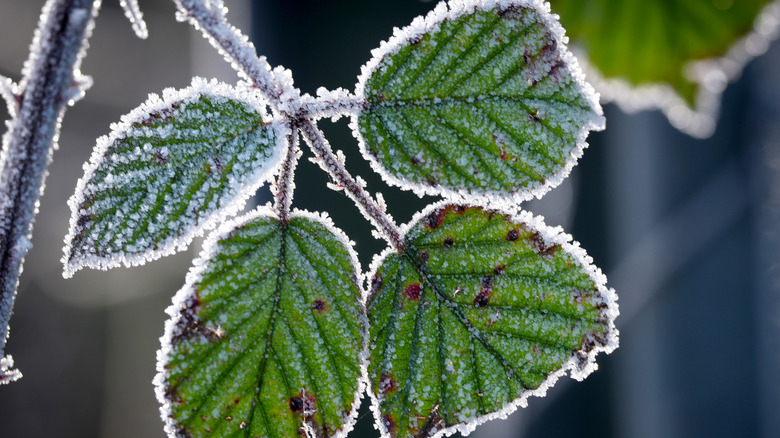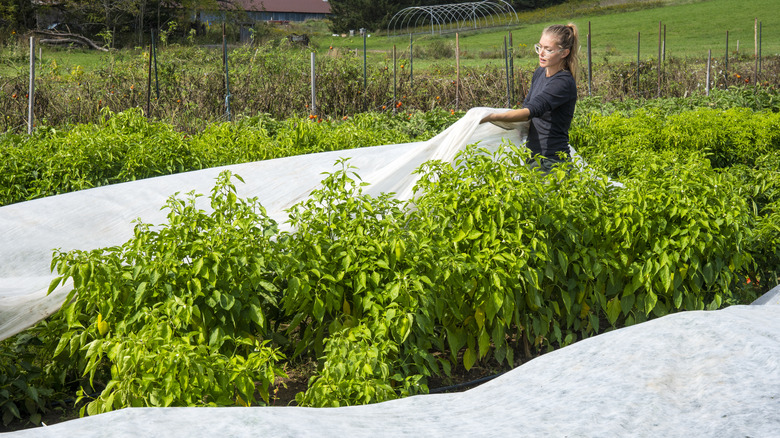When To Expect The First Frost Of 2025 Based On Region
It's important for anyone who gardens to have an idea of when the first and last frost will happen in their area. They tell you the expected window of your gardening season. Generally, the last frost date is talked about the most, as it's around this time that the temperature warms up to between 36 and 32 degrees Fahrenheit, and you can begin to plant certain fruits and vegetables. However, it is also handy to know the first frost date, as it indicates when you should start bringing your plants indoors if you want them to survive the winter.
Additionally, there are certain vegetables that you should wait to harvest until after a big frost, as this improves their flavor and allows them enough time to reach full size. For the most part, you can expect the first frost to occur between the end of August and December, depending on where you live. There are also ways to protect your plants from frost, even if you can't easily transfer them. However, you need to make sure you use the proper methods, as there are several garden "hacks" that won't actually protect your plants from frost. Unfortunately, like most other weather, there is no clear answer on when the exact day will occur. However, you can get a good idea based on previous averages and predictions from groups dedicated to studying the weather, such as the National Oceanic and Atmospheric Administration (NOAA).
The average frost dates by region
The continental US is broken up into five main regions: the Northwest, Southwest, Midwest, Northeast, and South. In the South, the range can be anywhere from the beginning of October to never. In general, the further south you go, the later the frost date, so expect frost in December in places like Florida and early in October for places near Virginia. For the Southwest region of the United States, most areas can expect the first frost to occur between late September and November, although some of the more southern areas may not experience frost until December.
Freezing dates for the Northwest are similar to those in the Southwest, where you can expect frost to arrive sometime between early September and November. The Midwest quickly gets cold and will likely experience its first frost between the middle of September and the beginning of October. This is also the case for the Northeast, though the northern-most parts may see frost at the beginning of September.
While these are the average dates for the regions, there may be some slight differences for 2025. According to NOAA, the eastern and southern parts of the United States will experience temperatures at least a little above average. This means that the frost date could potentially be pushed back. However, in the northern-most parts of the Midwest and Northwest regions, there is a chance for cooler temperatures, which means the frosts could come earlier than expected.
How else to check your frost date
There is a lot of variability in when the first frost can occur, especially if you are looking at entire regions. Even in individual states, you will find that the first frost date varies. For example, Georgia's spans nearly two full months, starting anytime from the beginning of October to the end of November. When coupling several states together, this range becomes even wider.
Because of this, using your region to determine a first frost isn't always ideal. For a better idea of when it might occur, check your USDA zone. Often used to determine which plants are variable, these zones are usually created based on similar temperatures and precipitation levels. Therefore, the average first frost date range is much narrower. For example, Zone 1 might see frost before the end of August, while Zones 11 and higher are unlikely to get any frost at all.
Look at specific states and counties instead of regions or zones for the narrowest window. For example, in South Carolina, most major cities will experience their first frost in early to mid-November. The Farmer's Almanac is another great resource for finding the first frost date for your garden where you live.


